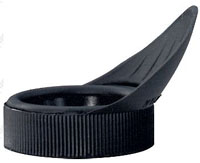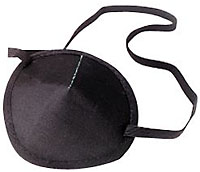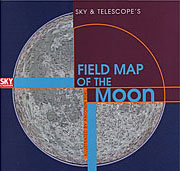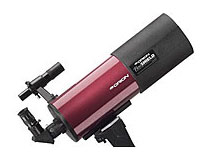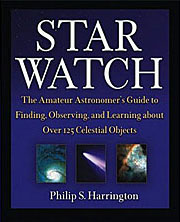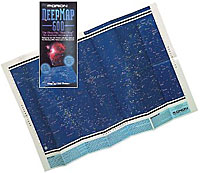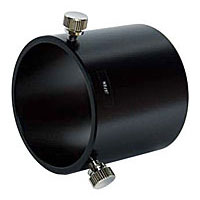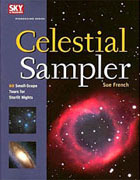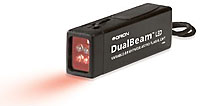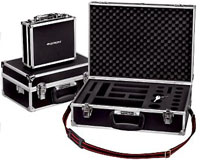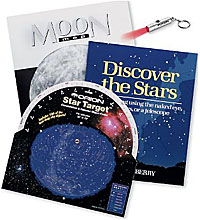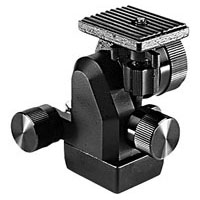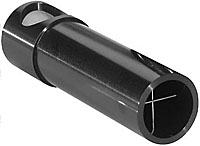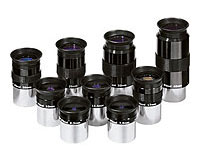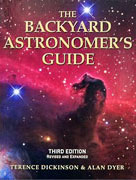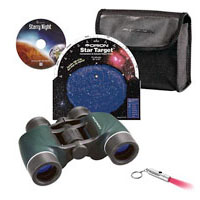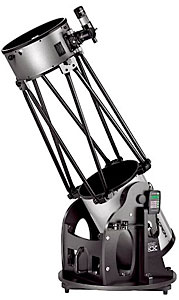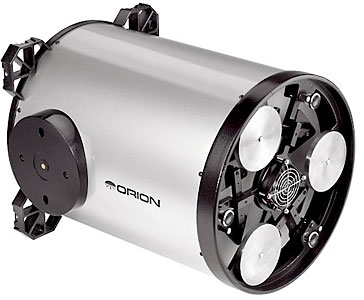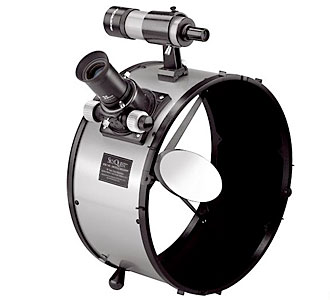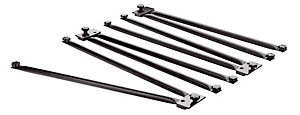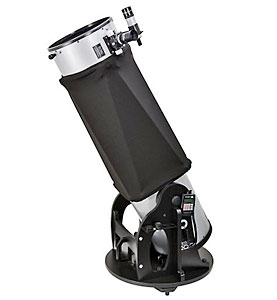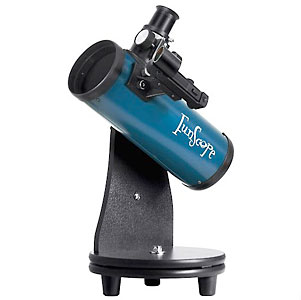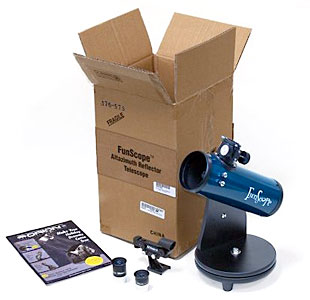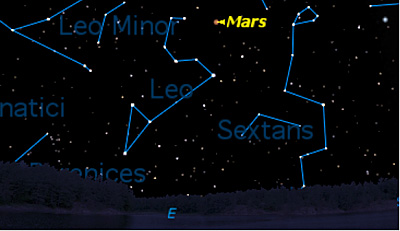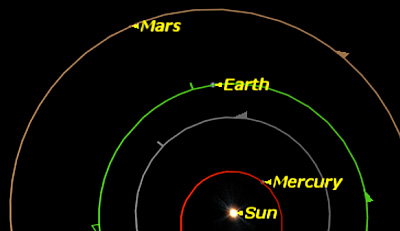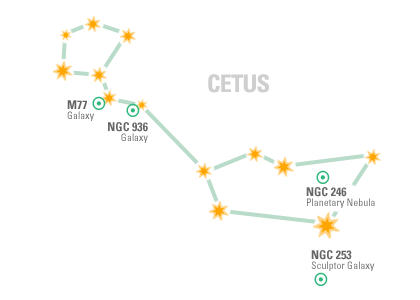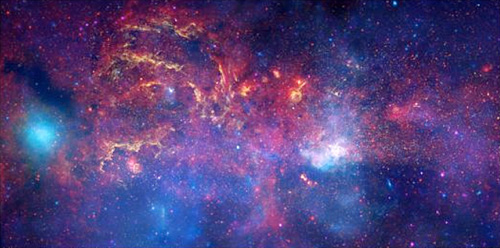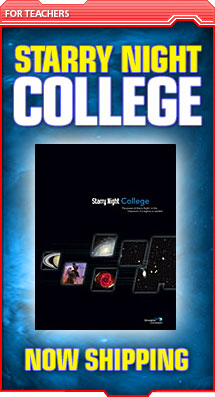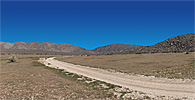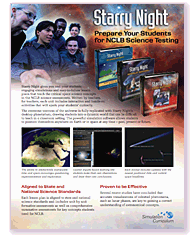 |
||||||||||||||||||||||||||||||||||||||||||||||||||||||||||||||||||||||||||||||||||||||||||||||||||||||||||||||||||||||||||||||||||||||||||||||||||||||||||||||||||||||||||||||||||||||||||||||||||||||||||||||||||||||||||||||||||||||||||||||||||||||||||||||||||||||||||||||||||||||||||||||||||||||||||||||||||||||||||||||||||||||
|
If you have trouble viewing this newsletter, click here. Happy holidays and welcome again to our monthly newsletter, with features on exciting celestial events, product reviews, tips & tricks, and a monthly sky calendar. We hope you enjoy it!
Ho ho ho! It’s getting to be that time of year again, when I get to play Santa and browse through the Orion catalog looking for goodies to put in some astronomer’s stocking. These are the little gizmos and gadgets which cost very little, yet make stargazing a more pleasant occupation. Remember, the rules of the game are to print out these pages, mark the things you’d like with a big red marker, and leave in some prominent location as a not-so-subtle hint to your loved ones. Everything on this list is either something I own myself, or wish I did! $10 and under
$10 to $20
$20 to $30
$30 to $40
$40 to $50
So those are my choices for the 2009 holiday season. I hope you receive the ones you want, and have lots of astronomical joy in 2010! Geoff Gaherty
So, the Boss tells me he wants an article on the major celestial events for 2010, but the latest edition of the astronomer’s bible, the RASC Observer’s Handbook, hasn’t arrived in my mailbox yet. What to do? What to do? Then, an inspiration strikes! Starry Night now has an event generator built into it, which will predict astronomical events for a given period. I fire up my copy of Starry Night and set the location to London, England, since I want the dates to be in Universal Time. I set the dates to range from 1/1/2010 to 12/31/2010, ask for planetary events and lunar and solar eclipse events, and click the “Find Events” button. Seconds later a list appears. I click the “Export” button and get something like this (with a bit of formatting): Starry Night generated events
I’ve put the interesting events in bold, and colored the eclipses in bold purple. From this table, it’s easy to pull out the major astronomical events of 2010. It’s then a matter of fleshing out the bones, again using Starry Night, with a little help from the internet eclipse.gsfc.nasa.gov/OH/OH2010.html Eclipses There will be four eclipses in 2010, two solar and two lunar. The annular solar eclipse on January 15 will be visible in central Africa, the Indian Ocean and eastern Asia. A partial eclipse will be visible over a much larger area of Africa, Europe, and Asia. The path of the total solar eclipse on July 11 is almost entirely over water: the south Pacific Ocean. The only land it touches is one of the Cook Islands, Easter Island, and the west coast of Chile and Argentina. The partial lunar eclipse on June 26 will be better than some of the ones we had in 2009, with the Moon about half in the Earth’s dark umbral shadow. This eclipse will be visible over the Pacific Ocean and much of North America, but not eastern Canada and New England. The really good news is the total lunar eclipse on December 21. This will be well placed for observers all over North America, the first good lunar eclipse we’ve had in quite a while. Planets Mercury is never far from the Sun, but makes short appearances both east (in the evening) and west (in the morning) of the Sun:
I’ve marked in bold the most favorable apparitions for observers in the Northern Hemisphere. Venus begins the year on the far side of the Sun, superior conjunction being on January 11. It then becomes an “evening star” gradually increasing in brightness and distance from the Sun in the sky, until it reaches greatest eastern elongation on August 18. Then it moves in front of the Sun, reaching inferior conjunction on October 29, becoming once again a “morning star.” Mars is in opposition in Cancer on January 29, but is actually closest to Earth two days before that. This is what is known as an aphelic opposition, because Mars is almost at its farthest distance from the Sun, aphelion. As a result, Mars will appear very small and relatively dim, as compared to its last perihelic opposition in August 2003. Jupiter is in opposition on September 21, located in Pisces. It is close to the celestial equator, so will be well seen by observers in both hemispheres. Saturn will be in opposition on March 22, located in Virgo. The good news for people who tried to get their first view of the rings in 2009 is that the rings will be visible again, having completed their vanishing act. They will still be quite narrow, but once again Saturn will be a magnificent sight in small telescopes. Uranus reaches opposition just five hours after Jupiter on September 21. They will make a nice pair in a wide-field telescope eyepiece for a few weeks around that date. Neptune is in opposition on August 20. It is located on the border between Capricornus and Aquarius, and spends time in both constellations in 2010. So that’s what Starry Night told me about the events to come in 2010. I hope the Boss will be pleased! Geoff Gaherty
Some things you have no choice about unless you want to land in the poorhouse: your large telescope will almost certainly be a Newtonian reflector on a Dobsonian mount. Other types of telescopes are simply too expensive for the average amateur astronomer. Probably the most important decision is how your telescope’s tube should be made. There are two main options: a solid cylindrical tube or a framework tube made of angled trusses. Both designs are equal in stability; the important difference is in portability. For a number of years, my main telescope was a 10-inch Newtonian on a Dobsonian mount with a tube made of Sonotube (cardboard) exactly 45 inches long. This dimension was important because, before I bought the telescope, I had measured my Toyota wagon carefully and 45 inches was the longest tube that would fit crosswise in the cargo space. All the other Dobs I measured had slightly longer tubes. This was a perfect fit, and I transported and used it happily for several years. Then we bought a larger car, a Volkswagen Passat wagon. “No problem!” I thought, until I discovered that, even though the new car was larger on the outside, the cargo space was slightly narrower. The 10-inch tube would fit only if loaded diagonally, leaving only two smallish triangular spaces into which very little would fit. This was when I started to consider a truss tube Dobsonian. The “tube” of a truss Dob is in three parts. Let’s look at the new Orion SkyQuest XX14i IntelliScope Truss Dobsonian. The bottom tube section, sometimes called the mirror box, carries the primary mirror in its cell and carries the two large altitude bearings: The top tube section, sometimes called the upper tube assembly or UTA, carries the secondary support, the secondary mirror, the focuser, and the finder: Joining the two are four pairs of trusses: The trusses bolt onto the bottom tube section, forming the skeleton of the tube, and then the top tube section bolts onto the trusses, forming a rigid structure. The importance of all this is that the tube, measuring 61 inches long and weighing 63.5 pounds, breaks down into smaller lighter components, the largest of which is the bottom tube section, 21.5 inches long by 16.5 inches wide, weighing only 47 pounds, which will fit into just about any vehicle. If truss tubes are so great, why do some people still prefer tubes? The main reason is simplicity: no assembly required. Tube scopes hold their collimation better, although if you’re consistent in how you assemble a truss, very little collimation is required. If all that’s needed is to move the scope in and out of the garage, most people leave the tube assembled and put the scope on wheels, only disassembling the tube when it’s necessary to fit it in a vehicle. Another problem with truss tubes is that open tube. Stray light can easily interfere with the view, and both primary and secondary mirrors are prone to dew. A shroud, a tube made of elastic black material, can and should be fitted over the trusses to reduce both stray light and dew. Telescopes of 10 inches aperture or less usually have tubes which will fit into standard vehicles, so there’s little reason to go to the complication of a truss tube. But tube telescopes of 12 inches aperture or larger become real beasts to transport, and that’s where the truss design starts to make real sense. Geoff Gaherty
In this issue I have my annual compilation of Stocking Stuffers: astronomical accessories which sell for under $50. But this year, I have a big surprise: a complete telescope which sells for under $50! Despite its name, this is not a toy, but a fully functional and quite useful little Newtonian reflector telescope on a miniature Dobsonian mount. If this sounds too good to be true, read on. The Orion FunScope comes almost completely assembled in a double-walled cardboard carton: The only assembly required is attaching the red-dot finder to two bolts on the tube and dropping one of the two eyepieces provided in the focuser. The inner carton has a handle and doubles as a carrying case. The telescope is equipped with a 76mm diameter spherical mirror with a 300 mm focal length. A 25 mm secondary mirror deflects the image to a smooth little rack and pinion focuser which takes standard 1.25-inch eyepieces. The eyepieces supplied are coated 20 mm and 10 mm Kellners. The finder is the same EZ Finder II used on many of Orion’s more expensive telescopes. This puts Orion’s offering ahead of similar telescopes from other companies which have either a poor quality 5x24 optical finder or no finder at all. The most interesting feature of this scope is its mount. This is a scaled-down version of the one-armed Dobsonian mount used very successfully on Orion’s popular StarBlast telescopes. It is a smooth and solid wonder compared with the shaky mounts supplied with most other scopes in this price range. It is designed to be used on a small table but, if a suitable table isn’t available, it has a standard camera tripod socket (3/8” with 1/4”-20 insert) on its base. I found it worked well sitting on the wide top rail of my deck. I was a bit dubious about an f/4 spherical mirror, but it turns out to work pretty well at the low magnifications of the supplied eyepieces (15x and 30x). The optical system on my sample was slightly out of collimation, and improved significantly once I aligned it. Collimation is a simpler process than on most reflectors because the primary mirror is not adjustable, all adjustments being made by three Phillips-head screws on the back of the secondary mirror. Using these three screws it was easy to get the primary mirror centered in the secondary using a simple collimation cap (not provided). I used this telescope on a variety of the objects a beginner might try. The Moon was impressive at both magnifications. Jupiter was best at 30x, the moons being easily visible, but no bands were seen on the disk. Large deep sky objects worked very well, including the Pleiades, the double cluster in Perseus, and the Andromeda Galaxy. In the case of the latter, the satellite galaxy M32 was easily visible, but M110 couldn’t be seen. M33 was faint but clearly visible at my dark sky site. The double star Albireo was easily split at 30x. I also had a lot of fun using this scope in daytime as a long-distance microscope. It focuses quite closely, so that nearby objects can be examined at high magnifications. The image is, of course, upside down, but that is easily fixed by standing with your back towards the object at which you are looking. I learned this trick with my first Newtonian as a teenager; I’m surprised that today’s instruction manuals don’t teach this. The weakest part of this telescope is the eyepieces provided with it but, when you realize that the whole telescope sells for the price of one decent Plössl eyepiece, there really are no grounds for complaint! If you already have some good eyepieces, it’s worth using them on the FunScope and, if you don’t, it may be worth buying a good Plössl or two to use instead of the supplied Kellners. Except for the eyepieces (which really aren’t that bad), everything about this scope speaks of quality: OK optics, a nice red-dot finder, and, most of all, a solid and pleasant-to-use table-top Dobsonian mount, miles ahead of anything else in its price class. Most of all, this telescope lives up to its name: it really is fun to use, even for an old astronomical veteran like myself. Geoff Gaherty
One of the nicest things about Starry Night is that it can serve as a bridge to people who aren't quite as interested in astronomy as I am. This holiday season I decided that I wanted to show my "normal" friends and family what Starry Night could tell them about Christmas The Christmas Star, or "Star of Bethlehem", reportedly acted as a beacon for the Three Wise Men to follow from the Middle East to Bethlehem and Jesus' birth. I've heard many explanations over the years: a comet, a supernova, meteors, a supernatural event. Now, I have access to the perfect simulation tool Here's what I did... From what I could learn, most astronomers and Biblical scholars believe that the appearance of the Star of Bethlehem most likely occurred sometime between the years 7 and 2 BC. Was there anything unusual in the sky that might have caught the attention of the wise men? Just so happened that a very close conjunction of Venus and Jupiter would have been visible in the eastern dawn sky of the Middle East from about 3:45 to 5:20 a.m. on August 12, 3 BC. The two planets came together in the constellation of Leo. To the early Israelites, Leo was a constellation of great astrological significance and considered a sacred part of the sky. The planets came so close together that most people saw it as one object – a very striking sight. With this information, I used Starry Night to go back in time and recreate the August 12, 3 B.C. event. You can do it too...
Two notes...
Seth Meyers
A Bright Beacon for Christmas 2009 This Christmas, we have our own beacon in the sky - the planet Mars. On Christmas Day, Mars is the brightest object in the evening eastern sky. Rising about 9 pm in the constellation of Leo, Mars is visible for the rest of the night.
Midnight, December 25, 2009 EST Mars is particularly bright now because it is nearing opposition and closest approach to the Earth.
The faster-moving Earth will overtake Mars in late January, opposition occurring on January 29, 2010. After that, Mars will gradually become dimmer as the distance between the two planets increases. As oppositions of the red planet occur approximately every two years, we will have to wait until March 3, 2012 for the next one. Just as the Christmas star of two thousand years ago brought tidings of great joy, hopefully this year's “Christmas Star” will brighten your holiday season. Note: You can easily determine oppositions of Mars in the past or future by choosing Favorites from the menu. Then navigate to Solar System>Inner Planets>Inner Solar System and noting when Mars, Earth and the Sun are in a straight line. Herb Koller
The Star of Bethlehem Pedro Braganca
Lying far from the galactic plane (which contains so much obscuring matter) Cetus, representing the gates of the underworld, is home to many observable galaxies. M77 is a 9th Magnitude spiral galaxy, one of the first recognized spiral galaxies, and the closest and brightest of Seyfert galaxies (their central regions having rather bright nuclei whose light output varies over time and atypical spectra with unusual emission lines). NGC 936 a faint galaxy best viewed with averted vision. NGC 246 a large and reasonably bright planetary nebula (the last breath of a dying star) with an irregular "surface texture". While technically in the constellation Sculptor, NGC 253, the Sculptor Galaxy, is a remarkable spiral galaxy with an unusually high rate of star formation. It's the brightest member of the Sculptor group, a group of galaxies centered around the south galactic pole. A small telescope reveals a long bright haze intermingled with brighter regions and dark lanes. Due to its high surface brightness it takes magnification quite well. Sean O'Dwyer
Central Region of the Milky Way
RULES: We would like to invite all Starry Night® Education users to send their quality astronomy photographs to be considered for use in our monthly newsletter. Please read the following guidelines and see the submission e-mail address below.
|
NOV/DEC 2009
|
|||||||||||||||||||||||||||||||||||||||||||||||||||||||||||||||||||||||||||||||||||||||||||||||||||||||||||||||||||||||||||||||||||||||||||||||||||||||||||||||||||||||||||||||||||||||||||||||||||||||||||||||||||||||||||||||||||||||||||||||||||||||||||||||||||||||||||||||||||||||||||||||||||||||||||||||||||||||||||||||||||||
 |
||||||||||||||||||||||||||||||||||||||||||||||||||||||||||||||||||||||||||||||||||||||||||||||||||||||||||||||||||||||||||||||||||||||||||||||||||||||||||||||||||||||||||||||||||||||||||||||||||||||||||||||||||||||||||||||||||||||||||||||||||||||||||||||||||||||||||||||||||||||||||||||||||||||||||||||||||||||||||||||||||||||
|
|
||||||||||||||||||||||||||||||||||||||||||||||||||||||||||||||||||||||||||||||||||||||||||||||||||||||||||||||||||||||||||||||||||||||||||||||||||||||||||||||||||||||||||||||||||||||||||||||||||||||||||||||||||||||||||||||||||||||||||||||||||||||||||||||||||||||||||||||||||||||||||||||||||||||||||||||||||||||||||||||||||||||
You have received this e-mail as a user of Starry Night® or as a registrant at starrynighteducation.com
To unsubscribe, click here.
